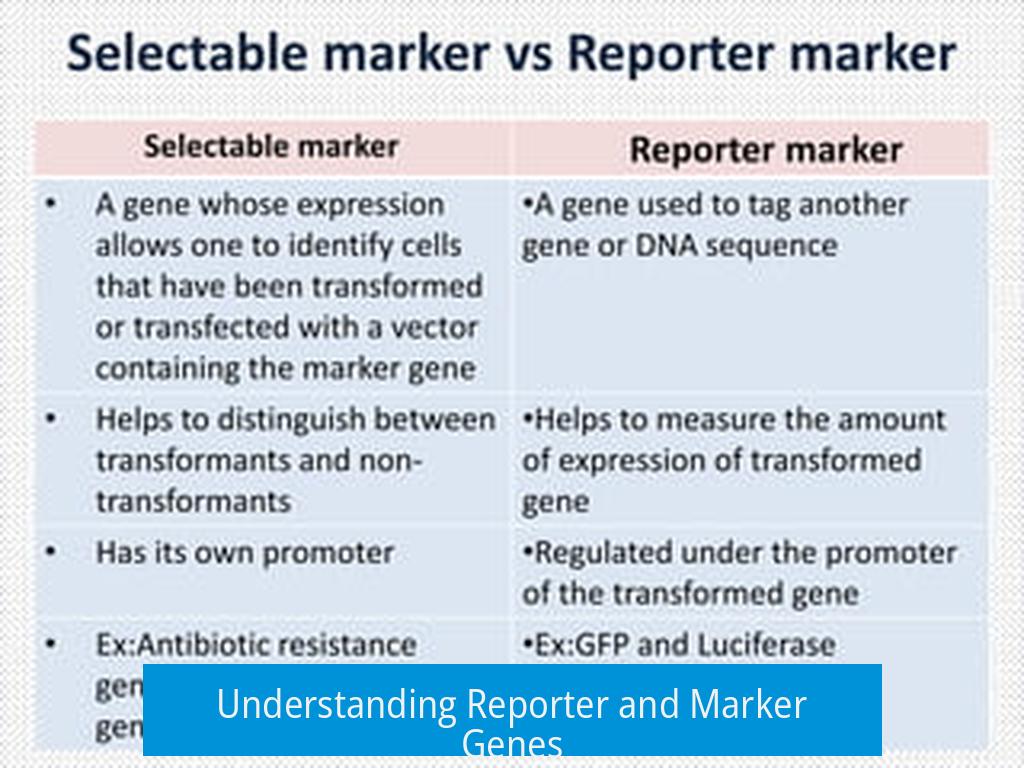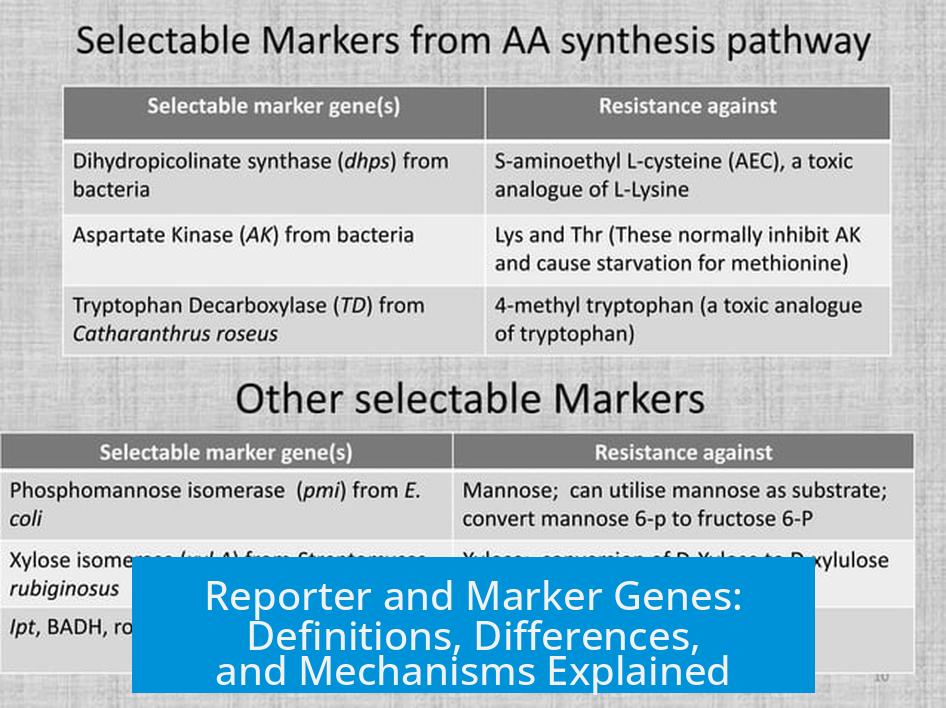Understanding Reporter and Marker Genes

Reporter and marker genes serve distinct roles in molecular biology: reporters indicate gene expression visually or enzymatically, while markers enable selection of transformed cells by conferring antibiotic resistance.
Reporter Genes: Visual Indicators of Expression
Reporter genes produce detectable signals to show whether a specific gene or promoter is active. Common reporters include fluorescent proteins like GFP (Green Fluorescent Protein) and RFP (Red Fluorescent Protein), or enzymes such as β-galactosidase. When a reporter gene is placed under control of a promoter, its expression reflects the promoter’s activity.
This gene produces a protein that emits fluorescence or catalyzes a color-producing reaction, allowing researchers to visualize gene expression directly under the microscope or by color assays.
Marker Genes: Selectable Traits for Transformed Cells
Marker genes provide a survival advantage to host cells carrying the gene. Typically, these genes encode antibiotic resistance proteins, such as those against ampicillin, kanamycin, or tetracycline. Once transformed with a vector containing a marker gene, only cells expressing the marker survive treatment with the corresponding antibiotic.
This selection process allows scientists to identify and isolate successfully transformed cells efficiently.
Key Differences Between Reporter and Marker Genes
| Aspect | Reporter Genes | Marker Genes |
|---|---|---|
| Function | Visualize gene or promoter expression | Select transformed cells via survival |
| Detection | Fluorescence, color change, enzymatic assay | Growth on antibiotic-containing media |
| Examples | GFP, RFP, β-galactosidase | Ampicillin resistance, Kanamycin resistance |
Underlying Mechanisms Explained
Reporter genes are linked to promoters of interest. When these promoters activate transcription, the reporter produces an easily detectable protein. For example, GFP fluoresces green light upon excitation, indicating promoter activation in real-time.
Marker genes produce proteins that neutralize antibiotics or pump them out of the cell. As a result, only cells harboring the marker gene survive antibiotic treatment. This method leverages natural resistance genes from R-plasmids to distinguish transformed cells from non-transformed ones.
Summary of Key Points
- Reporter genes visualize gene expression by producing detectable signals like fluorescence or color change.
- Marker genes allow selection of transformed cells based on antibiotic resistance.
- Reporter detection relies on direct observation; marker detection depends on cell survival under selection pressure.
- Both genes play crucial roles in molecular cloning and gene expression studies but serve fundamentally different experimental purposes.
What is the main function of reporter genes?
Reporter genes indicate if a promoter is active by producing a visible or measurable product. For example, GFP fluoresces when expressed, showing gene activity.
How do marker genes help in selecting transformed cells?
Marker genes provide antibiotic resistance. Cells with these genes survive antibiotic treatment, allowing easy identification of successfully transformed cells.
How do reporter genes differ from marker genes in detection?
Reporter genes show expression through color or fluorescence. Marker genes enable survival under antibiotics, so detection is by growth on selective media.
What underlying mechanisms allow reporter genes to function?
Reporter genes are placed under a promoter. When active, they produce a protein like GFP that creates a visible signal, confirming gene expression.
How do marker genes confer antibiotic resistance?
Marker genes encode proteins that neutralize antibiotics or pump them out. Only cells with these genes survive when exposed to the antibiotic.





Leave a Comment